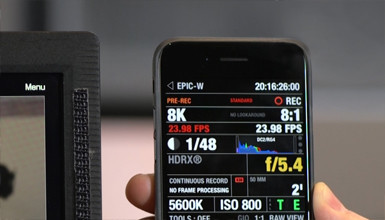Opting to shoot anamorphic added another layer of complexity, though it definitely paid off in the final footage. Nicholas was nice enough to answer some questions about what went on behind the scenes to make Chain Reaction happen. To see some footage from the shoot itself, make sure to check out the official Behind the Scenes video under the cut.
Can you tell us a little bit about your background and where the inspiration for Chain Reaction came from?
NS: I'm a Los Angeles based director who specializes in action and adventure sports. I started out as a cinematographer using the Phantom HD and Flex cameras back in the late 2000's and moved from camera to direction over the years of working with some of the most incredible action sports athletes around the world. My background is in design and science, an interesting combination at the time but ended up being a great skill set for modern filmmaking, which sometimes resembles a technical maze of design and execution.
The inspiration was simple: we went to Jon Devore, stunt coordinator and Captain of the Red Bull Air Force, which is a team of the best aerial athletes in the world. We asked him, given no limitations, what he would want to do next as an athlete. Jon had just come off doing the aerial stunts for Point Break and also previously Transformers 3 (the aerial stunts in downtown Chicago). His take was that people will always do more difficult BASE jumps (jumping from stationary objects) or wingsuit lines, but to do them all in sequence was something that hadn't been done before. Armed with this knowledge, we set out to find the perfect location to pull off all of the aerial disciplines that his team could put into one sequence.
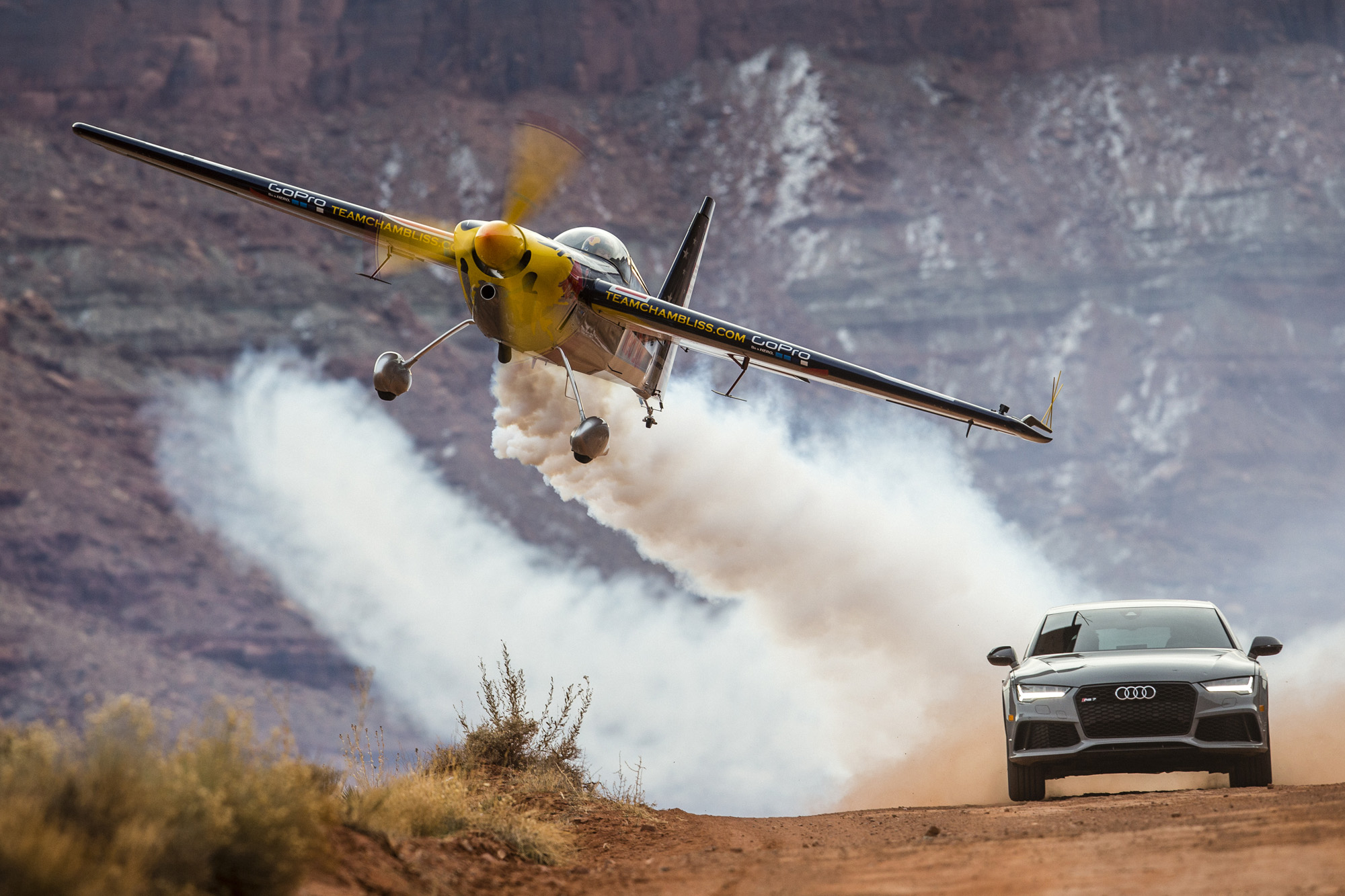
What kind of locations did you shoot in? Did you run into any particular challenges with those locations?
We considered many different locations across the American Southwest. Unfortunately, many of them weren't keen to allow the types of risky stunts we were aiming to do. Permitting was a major issue, which our producer, Ian Votteri, had to tackle with the local authorities. I wanted backlight in both sunrise and sunset shooting scenarios with our hero locations, which also presented problems. At the end, we decided on the Fisher Towers just outside of Moab, which allowed us the best mixture of optimal sun location and also was able to be permitted for the specific stunts being done.
The diverse terrain was beautiful to photograph but also was so remote and extreme that even radio communication was broken between crew, athletes and the aerial units. Simple things like confirming landing locations, transportation, and takeoff times for the aircraft at the nearby airport needed to be figured out the evening before. Stunt coordination all happened over Google Earth with scout photos and toy helicopters and cars being used to craft shoot angles and stunt choreography.
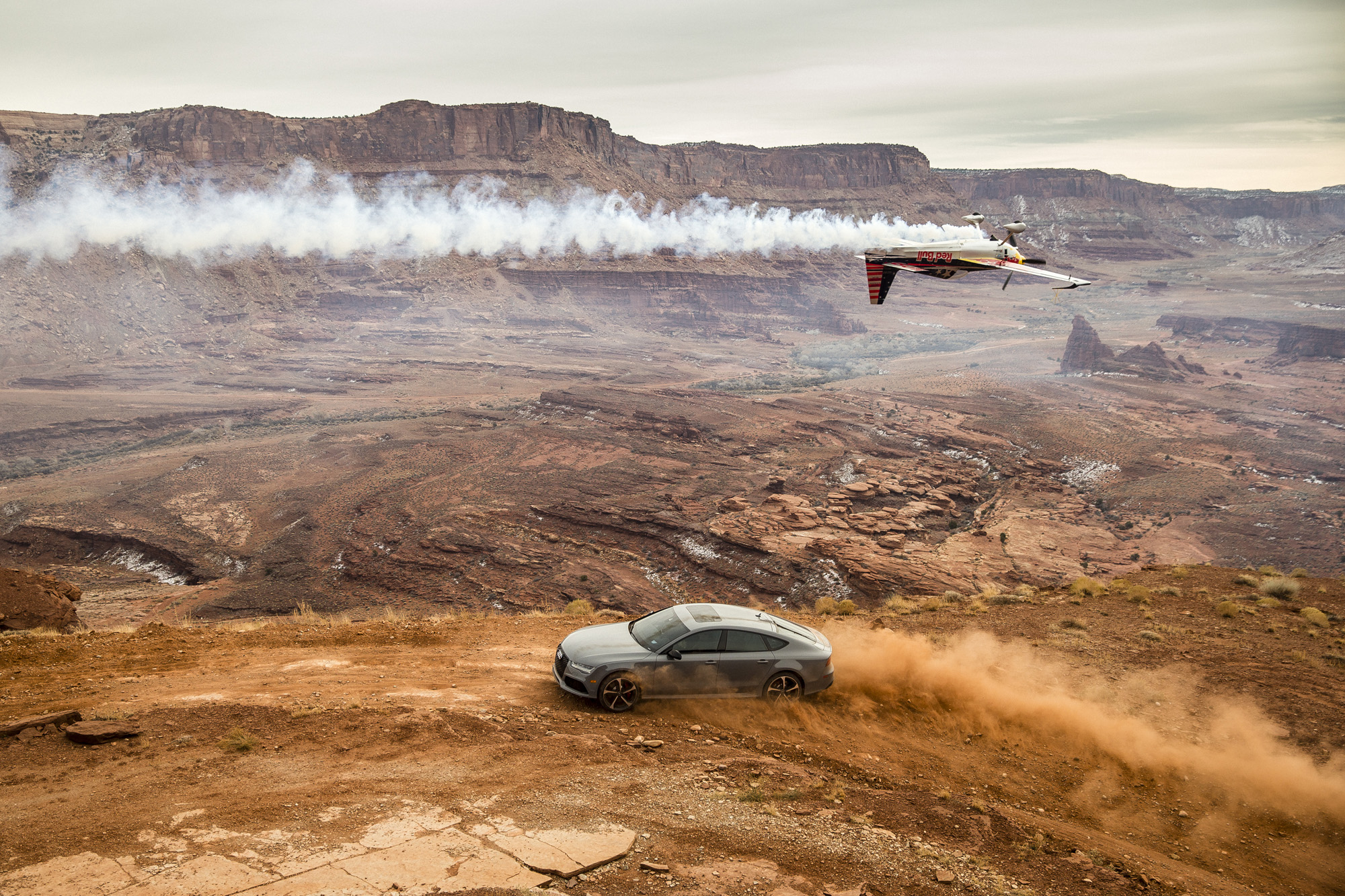
What was your shooting schedule like?
The shoot was five days. However, the main action sequences happened completely in single takes for both authenticity and continuity. Because of permitting, we were only allowed a single shoot day for the main hero location with the additional days being contingency for weather and also for pickups, audio, etc. We shot 80% of the sequence in two days.
 Can you tell us about the cameras you used on this project?
Can you tell us about the cameras you used on this project?
We didn't have much control over light except for shooting time and sun location, and with long takes it was important that we have the widest dynamic range, as we wouldn't be able to pull stop with cameras strapped to the head of wingsuit athletes. We ultimately chose RED because of the small form factor and wide dynamic range. The Carbon trim of the EPIC and also the RED Carbon Fiber WEAPON were our main cameras using 4.5 round filters to save on mattebox ergonomics. GoPro and Garmin ViRB were also key components for true POV shots where weight was a concern. The Garmin ViRB cameras were used to pull real-time analytics readouts from the stunts as they would give us speed, distance, g-forces, heart rate, and more.
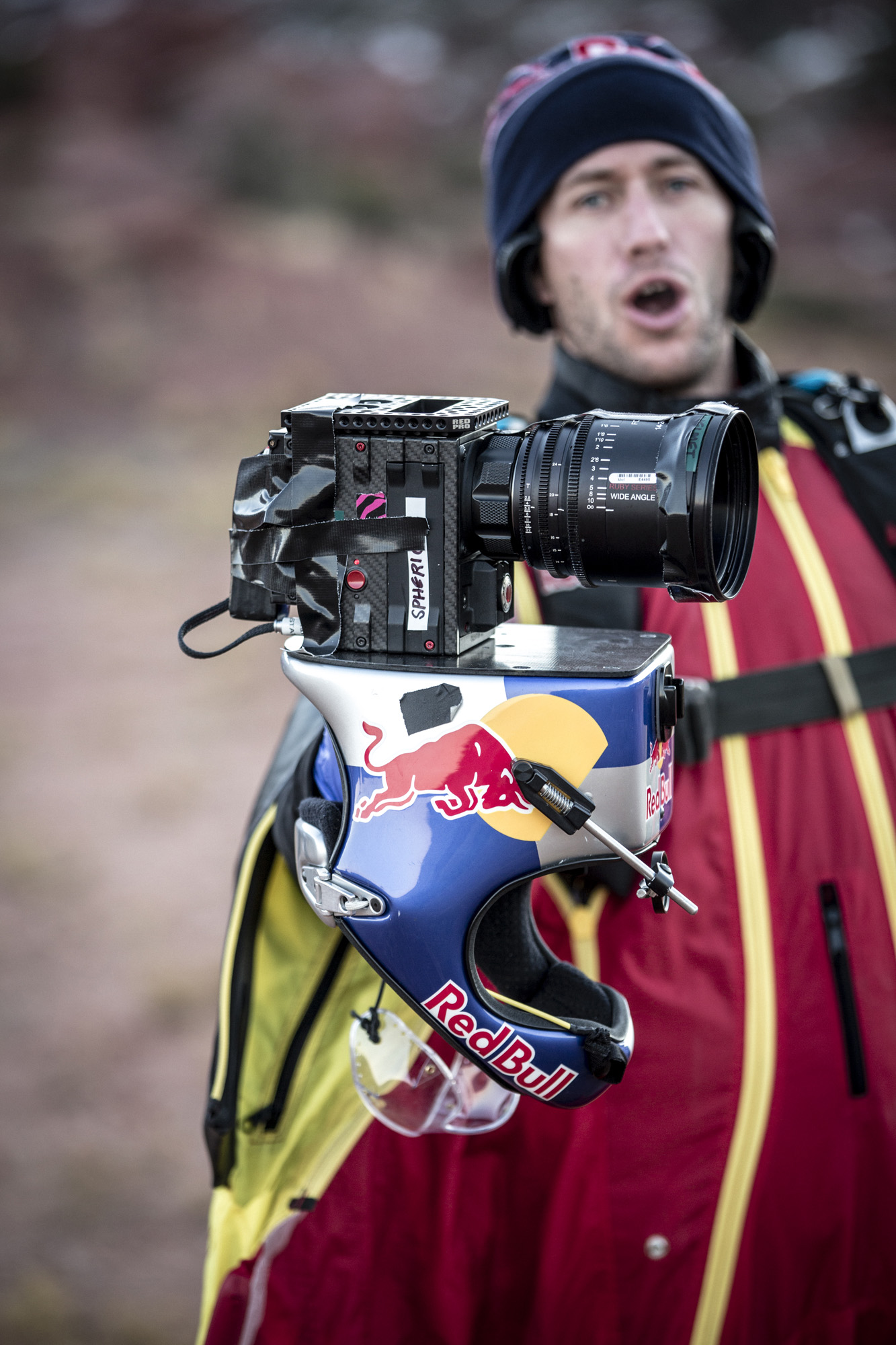
How did you rig or accessorize the cameras while shooting?
While ground angles on tripod and handheld were important, the two real ways you have a fighting chance with the "ants in the sky" are POV helmet-mounted cameras and helicopter gyro stabilized shots. Our stunt cinematographer Andy Ferrington would fly in a wingsuit chasing the athletes through the sky with a helmet-mounted RED Carbon EPIC powered by small lithium batteries and a 14-24 Ruby wide angle zoom attached to his helmet. We used 4.5" round filters to eliminate the need for a true mattebox because wind resistance and aerodynamics won't work in that scenario, i.e. flying out of the sky at over 100 mph on someone's neck. Cold was a big issue with it being -5 degrees at jump altitude and the camera getting blasted by wind, so we black balanced in the helicopter at altitude so it would be properly calibrated in the extreme cold.
For our helicopter angle, we needed the flexibility of a zoom but the aesthetic of anamorphic to match our hero format. After lots of testing we went with the Angenieux Optimo with the Hawk anamorphic adapted rear element. With the lens weighing in at over 24 lbs, even being paired with a lightweight RED WEAPON put it over the payload of most camera stabilization systems. We chose to use the Shotover K1 system which allowed us to use the larger payload. Personally, I liked the movement and stabilization of the K1 over other systems. It seemed to have an easier flow to it. Our aerial cinematographer, Carston Bell seemed to really like the control and movement it offered.
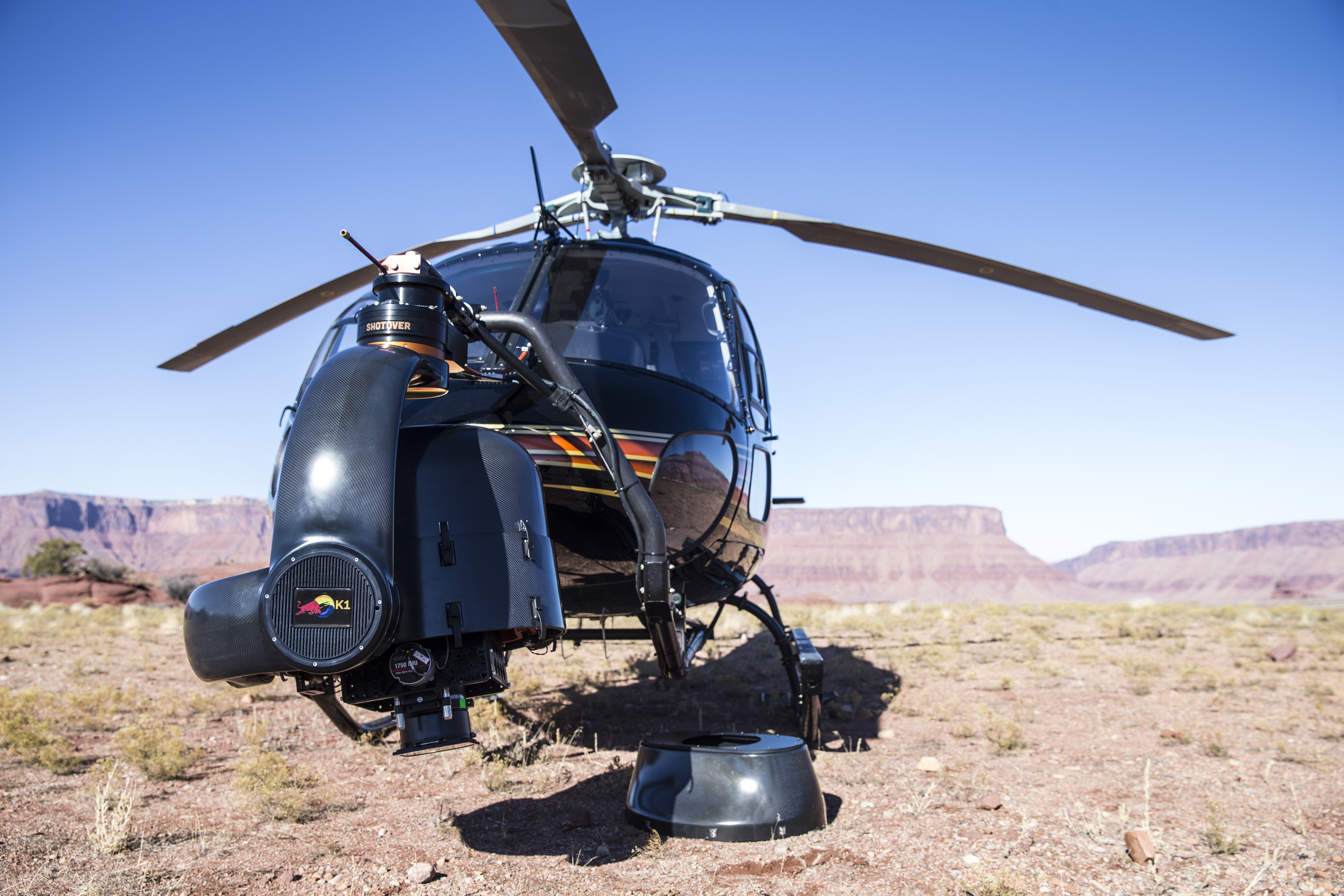
We also wanted to do several specific low-level drone shots and car-to-car in which we utilized the Freefly MōVI to achieve. The ALTA drone allowed us to mount the camera on top of the drone for our pilot Nick Wolcott to get some nice tilting-up and convergent shots. We mounted the MōVI with an isolation plate onto a Razr quad, which allowed us to get some great car-to-car moments with the camera low. The MōVI does a great job removing vibration but since the Razr shakes so much with flying over the terrain it gave a great kinetic look that I don't think we could've achieved otherwise. Out friends at Motion State helped us engineer these shots on set.
We outfitted the GoPro cameras with Snake River Prototyping ND filters which in our testing are the best quality filters for GoPros. They slow the shutter down so we were able to trigger actual motion blur in the POV shots to get as close in-camera to the 180 degree shutter of the larger cameras. The SRP filters are also great for extreme enviroments and not fogging even at high altitudes.
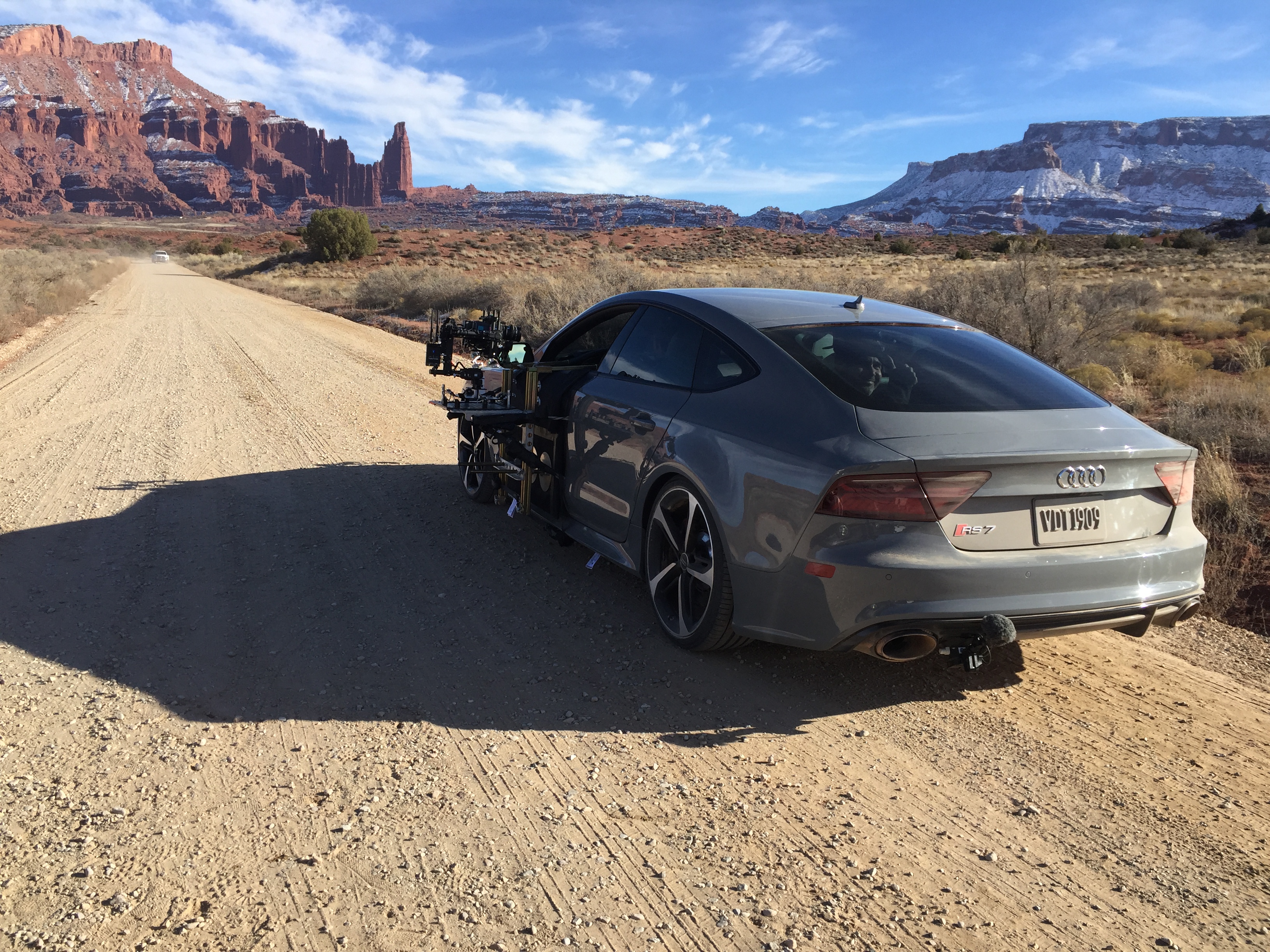
What was your day-to-day workflow like?
With any stunt sequence, safety is the first priority, so essentially the shot list and schedule was built around our stunt coordinator and AD's advice for safety. It was insisted from an early stage that we'd only shoot the main action sequences at first light so a light study was done in the weeks prior to the shoot.
The entire production/stunt/athlete team was stationed at a nearby hotel/cabin complex where we could "war room" out the next day each night. A high-tech system of using toy cars, helicopters and planes was used over a massive Google earth printout of the stunt arena so we could safely coordinate filming positions, stunt marks, and road closures. While we had contingencies for weather, they weren't needed because of a wonderful high-pressure system that had moved in the day before filming.
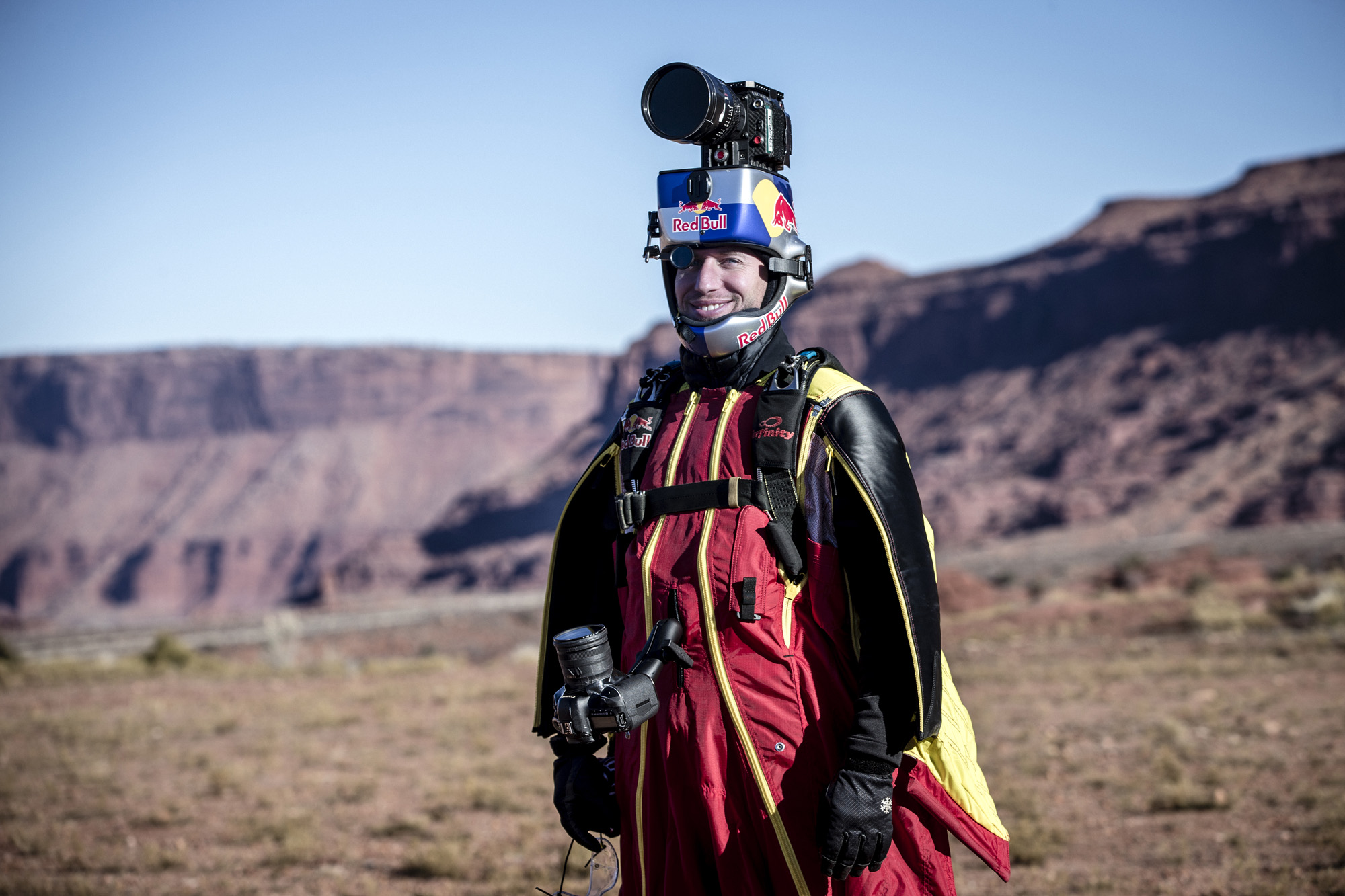
That said, there were several close calls on the shoot. Our stunt plane pilot, Kirby Chambliss, noticed a fuel tank leak on the very first take of the first day which removed the plane from any use. This resulted in scrapping our entire stunt sequence and put lots of pressure on the remaining stunt time allocated the following day to get it in "one shot".
There were also happy accidents that happened. When we first started shooting, we didn't think there was any chance the wingsuit athletes could possibly hold onto the side of the helicopter at a forward speed to match the stunt plane. But after the first "failed" take, they felt comfortable enough to do it for a minute at a time, at which point they had to retreat back into the helicopter because they were literally frozen at the -5 degree 100 mph winds they had to hold up against. Also, some of the roads which we had deemed too difficult to stunt drive on were by chance graded the week prior to shooting which allowed us to shoot some dynamic canyon stunts with both the plane and the car that were unplanned.
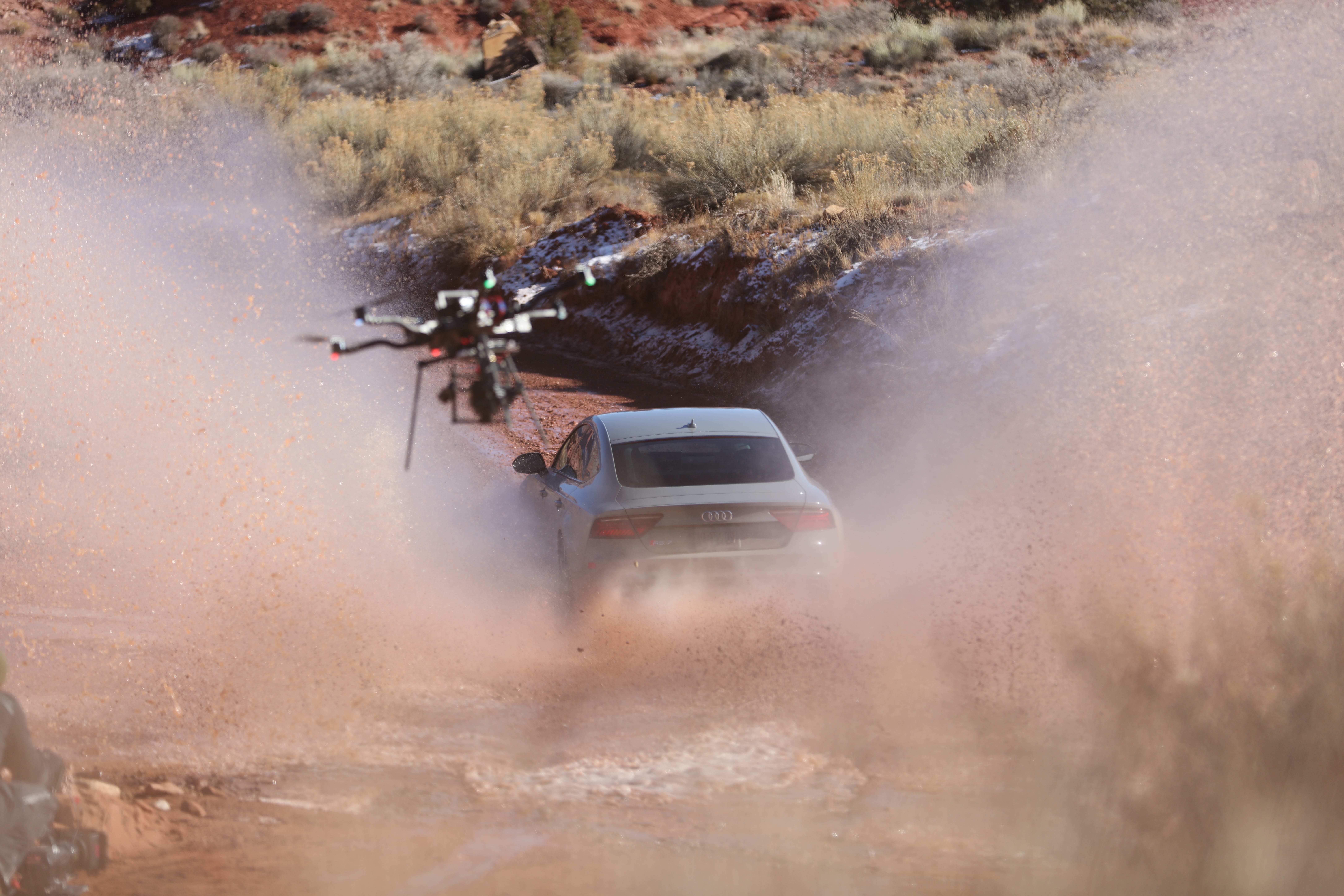 Photo credit: Adam Abikasis
Photo credit: Adam Abikasis
Why did you decide to shoot anamorphic for this project?
We've been shooting anamorphic with sports for the past few years and while traditionally action sports covet the "headroom" (vertical space) that 16:9 offers, we've been able to figure out the best lensing/camera combinations that allow us to pull off the format. For our story we wanted to show the vastness and scope of what these athletes do, especially against the gorgeous background of Moab, UT. I wanted to get the additional width of the frame without using cropping as that would limit the effectiveness of using the wider anamorphic lenses which we needed. After much testing, we decided using the RED EPIC/WEAPON format shooting in a full-frame mode (as opposed to the normal 4:3 crop ANA mode) would allow us to capture a 3.89:1 aspect ratio that didn't force us to crop into the frame artificially. This allowed us lots of horizontal look around space and also lots of resolution to do some dynamic in-shot zooms in post without cheating resolution. The problem came with vignette and barrel distortion at the edges of the frame that are normally hidden from the 4:3 sensor crop.
After testing our hero lenses, our DP David G. Wilson and I selected the 3.2:1 aspect ratio, which gave us the best balance of width/scope without showing heavy vignetting or making the video too wide for the iPhone/mobile/online crowd to watch on a small screen.
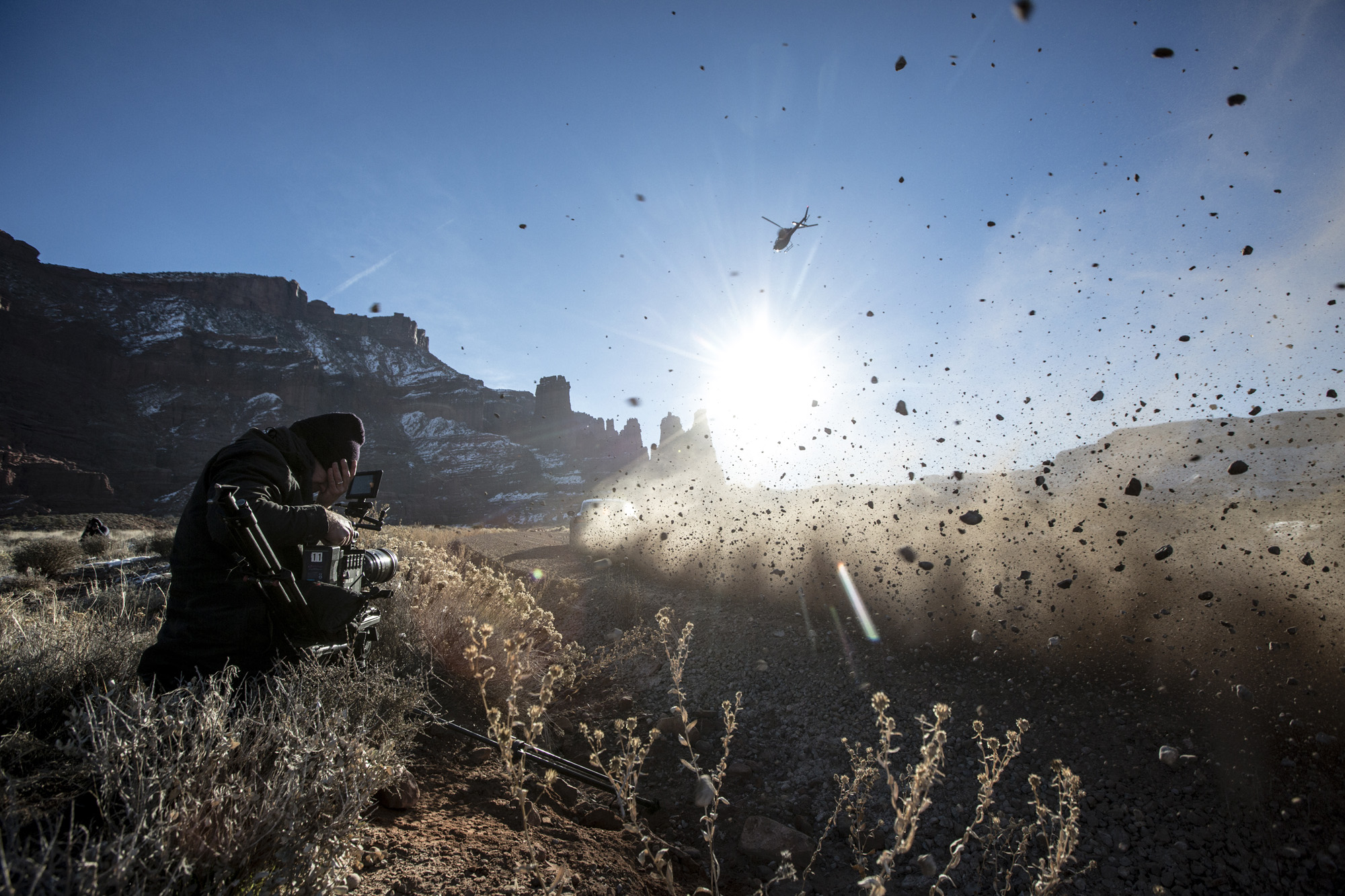
Do you think the anamorphic format aided in the storytelling? And did you face any unique challenges when shooting?
The anamorphics really allow for you to shoot "big" looking images. While shooting film is a great tool for an older cinema look, I much prefer using anamorphics to bend/soften light in an organic way onto sharp digital sensors such as the RED. In general, I think the sports world has always gravitated towards sharp images. However, softening them and giving them the scope that anamorphic offers puts the viewer in a position to see something different and special. Specifically, the Cooke Anamorphic/i lenses do really well wide open at f/2.3 and we tried to shoot wide open on all lenses and 5.6-8 split for the 12:1 in the helicopter to keep everything a sharp for VFX push-in's on the files.
Headroom and framing were the main issues. You have athletes traveling over 100 mph through the air, diving, racing around, etc. That presents a very difficult challenge for our camera operators to keep them in frame. In that same vein, you also have these athletes and vehicles zooming directly at you and chasing focus on anamorphic is extremely difficult, especially in a one-take scenario. Our cinematographers were up for the challenge, but it certainly taxed their abilities to the max.
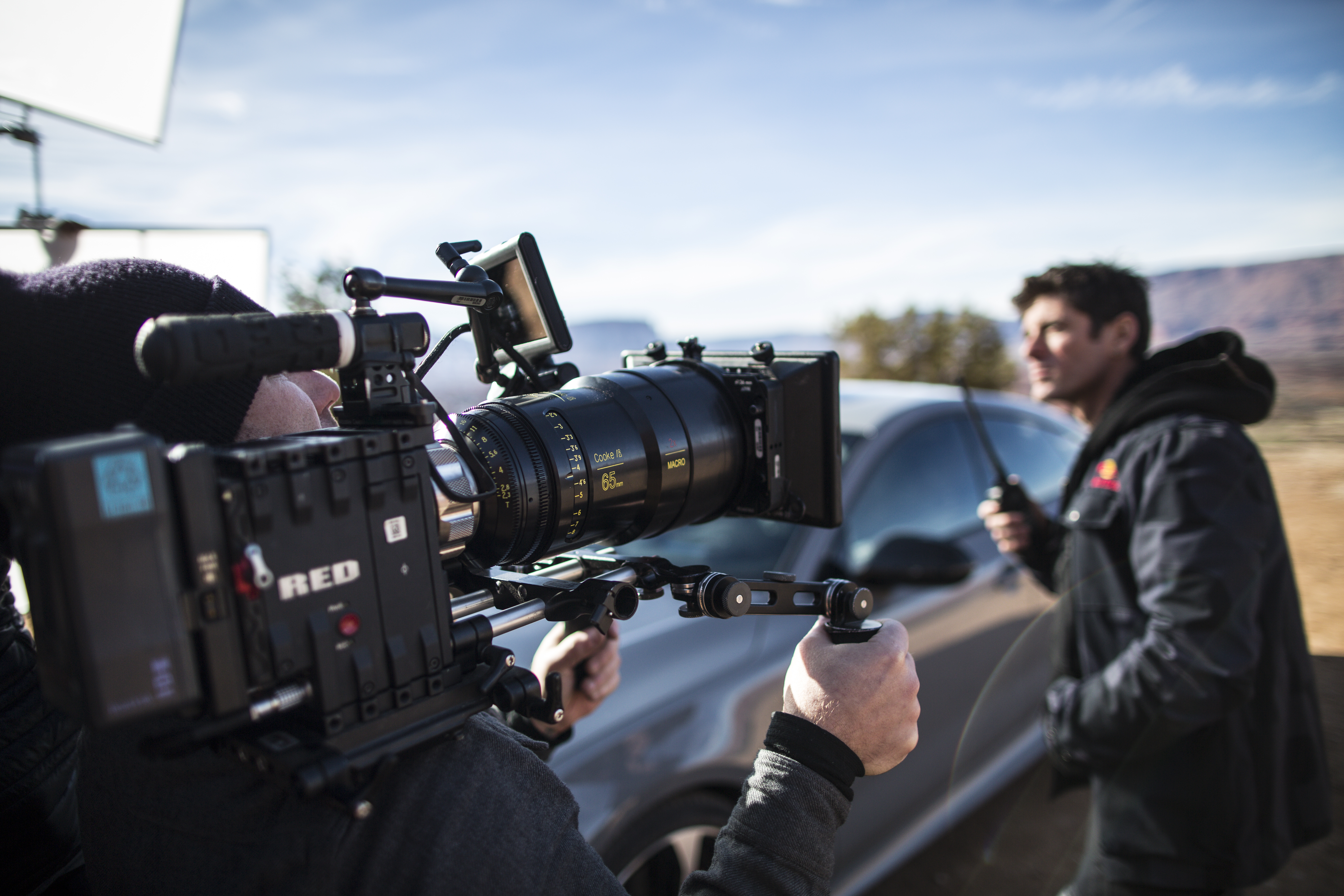
Specifically, what lenses did you use and why did you choose them?
The Cooke Anamorphic/i series were our main lenses used for production. We chose them because they retain the "anamorphic funkiness" while being housed in a professional modern lens that offered modern lens sharpness and minimized breathing when racking big focus moves. We shot them with a 1/8 Hollywood Black Magic diffusion filter to match them to the other lenses on the job.
The helicopter SHOTOVER system was a 12:1 Angenieux Optimo with a modified Hawk anamorphic rear element. We chose this lens because we ultimately needed a zoom with a full range and also reach for shooting things so far away. There are newer anamorphic zoom lenses coming on the market but for the time being the Angenieux offered a gorgeous image and a full range of focal lengths.
Anamorphic frame grabs from Chain Reaction
How did AbelCine get involved with the project?
We've worked with AbelCine for years on many different projects. We utilize the Phantom cameras quite often when shooting sports and AbelCine was the first main house to support the format. Plus, our Phantom techs are all graduates of the Phantom training programs. Abel services our Phantom cameras and we use them for rentals on most of our shoots. Because of all the mixed formats on this production along with the anamorphic element we choose to use Abel to prep and rent the equipment needed to make this shoot a reality. We rented the Cooke Anamorphic/i lenses from them and used the new checkout bays at the Burbank location. Overall, we had a great experience benching the lenses and prepping the shoot.
Photo credits: Christian Pondella // Red Bull Content Pool (except where specified)
About Chain Reaction
Director: Nicholas Schrunk
DP: David G. Wilson
Producers: Sandra Kuhn, Christopher Medak, Ian Votteri
Stunt Coordinator: Jon Devore
Production Company: Red Bull Media House
The Red Bull Air Force is a team assembled from the most accomplished and experienced aviation experts on the planet. Set against the backdrop of the Fisher Towers in Moab, Utah, the team uses pain-staking coordination to showcase their aerial talents all at once. With the help of some impressive precision driving in an Audi RS 7, the different feats flow together like a chain reaction, providing a snapshot of the amazing possibilities when humans take flight.
About Nicholas Schrunk
Nicholas Schrunk is an award-winning director specializing in action & adventure sports. Schrunk has directed top athletic talent across all professional and action sports. With a formal education in biology and design, he combines reason-driven interest in science with the design principles of assembly and arrangement producing an inspiring body of work that is as technical as it is artistic. To see more of his work, visit nickschrunk.com















